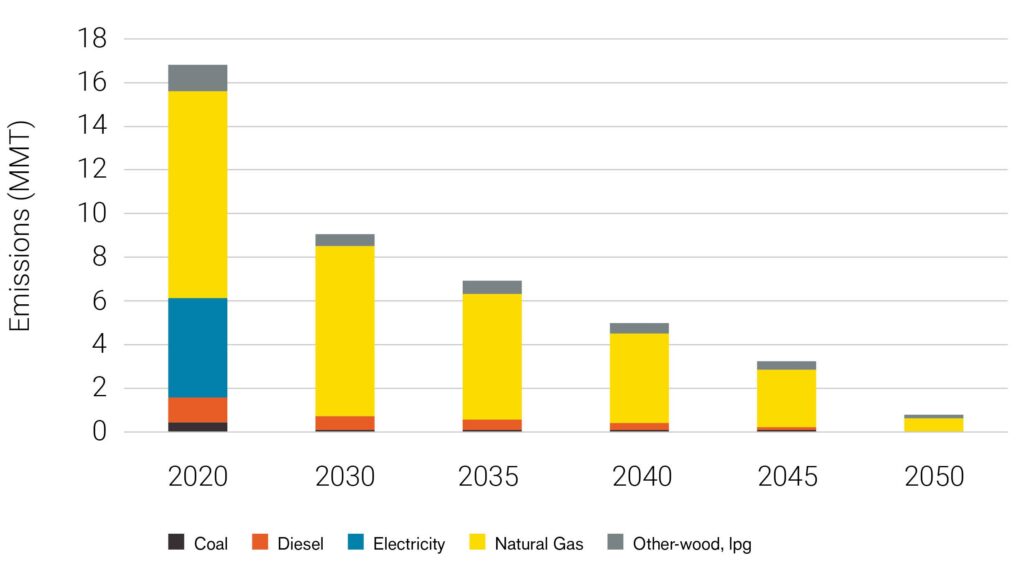Building Electrification
The 2021 State Energy Strategy recommends building electrification as the least-cost pathway to decarbonizing Washington’s building stock. The greatest portion of the building sector’s emissions come from the direct combustion of natural gas and other fossil fuels in buildings for space heating, water heating, and cooking.
Building Emissions by Fuel Type

Meeting the emissions state’s goals
To meet the state’s greenhouse gas reduction limits, emissions from gas in buildings must decline 14% by 2030 and continue to decline at an increasing rate through 2050. Findings from the 2021 State Energy Strategy are represented in the figure above.
Building electrification is not without its challenges and opportunities. Decarbonizing buildings depends on the electricity sector to provide clean electricity and increase the conversion of space and water heating to high-efficiency heat pumps. These shifts will require market and workforce transformation, capital investment, and equity at the forefront.
Residential Decarbonization Implementation Plan
The Washington State Energy Strategy and Operation 2030 identify policies and actions to achieve the state’s greenhouse gas limits and transition to 100% clean energy. In 2023, the Washington State Department of Commerce retained AECOM to develop a detailed Building Decarbonization Implementation Plan for residential single and multi-family buildings in order to bring these visions into practical action.
AECOM conducted an evaluation of residential single and multifamily buildings that included equitable strategies to enhance energy efficiency and electric conversion. The report includes an analysis of building
upgrade costs, in addition to actions, timelines and targets to meet state greenhouse limits established in RCW 70A.45.020.
Financial Impact of Fuel Conversion on Consumer-Owned Utilities and Customers in Washington
- Read the report by Energy and Environmental Economics, Inc. (E3) (PDF)
- Building Electrification Benefit Cost Analysis Model (Excel)
- Building Electrification Results Workbook (Excel)
Greenhouse gas (GHG) emissions from direct use of fossil fuels in buildings currently represent about 10% of Washington’s statewide total emissions. In order to achieve Washington’s climate target of economy-wide carbon neutrality by 2050, those direct emissions will need to be reduced.
The Washington State Department of Commerce retained Energy and Environmental Economics, Inc. (E3) to identify near-term opportunities and challenges for building electrification in Washington, with a specific focus on consumer-owned utilities (COUs).
E3 conducted an analysis for each COU that assesses building electrification cost-effectiveness and the potential system load impacts when building electrification occurs at scale. E3 and Commerce engaged the COUs throughout the study to receive data support and feedback for the analysis and this report.
